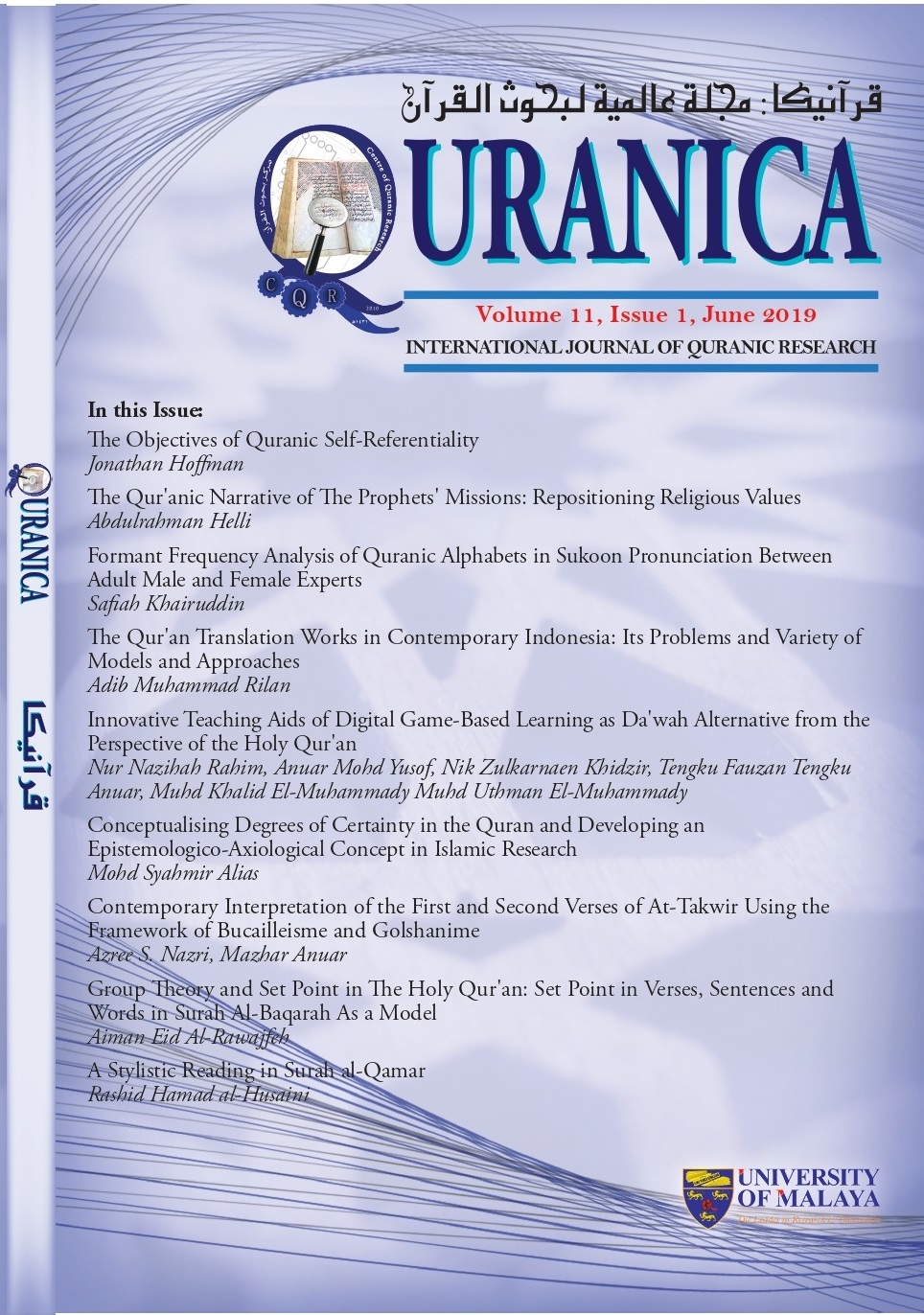Formant Frequency Analysis of Quranic Alphabets in Sukoon Pronunciation Between Adult Male and Female Experts
Main Article Content
Abstract
The recitation of the Holy Quran is an essential activity for all Muslim around the world, where reading the Quran in its proper manner according to the Prophet Muhammad (p.b.u.h.) will be rewarded. Traditionally the learning takes place thorough face to face session where the teacher will correct the recitation of the student. The learning normally started with recognizing the alphabet and its characteristics. There is no proof that one has pronounced the alphabet correctly except by hearing and looking at the student. This resulted in the rise of the development of Quranic recitation tools based on the speech, and image recognition. In this paper, formant features were extracted from the sukoon (°) pronunciation of Quranic alphabets by male and female expert reciters. The Quranic alphabets pronunciation signals were grouped according to the range of the first and second formant frequencies (F1 and F2), for both male and female experts. The result shows that female pronunciations gave higher values of F1 and F2 than male pronunciation for most of the Quranic alphabets. As for the alphabets, the pronunciation of the أشْ (Ash) has the highest F1 and F2 values for both male and female. Classification of alphabets were done using linear and quadratic discriminant analysis. The features of both experts will later be used as the reference in the overall Makhraj learning platform.
Downloads
Article Details
Disclaimer
QURANICA makes every effort to ensure the accuracy of all its contents. However, opinions, discussions, views and recommendations are expressed in this journal do not necessarily reflect the official policy of QURANICA or views of its editors or publishers. Therefore, QURANICA and its publishers will not be liable for any controversy may be arisen. The journal reserves the right, at its sole discretion, to change its terms and conditions of publications.
Copyright
It is a condition of publication that manuscript submitted to the journal have not been published, accepted for publication, nor simultaneously submitted for publication elsewhere. By submitting a manuscript, the author(s) agrees that copyright for the article is transferred to the publisher, if and when the manuscript is accepted for publication.
